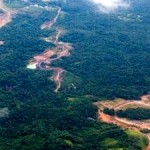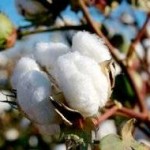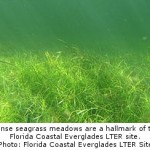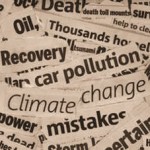Meanwhile, the warming Arctic is still putting polar bears at risk. Eight of the world’s 19 polar bear populations are declining as they struggle to raise young and hunt for food on shrinking ice sheets.
On land, tundra habitat is moving northward, thawing permafrost threatens to drain wetlands, and extreme winter weather events are causing die-offs of Arctic grazers like musk-oxen that are prevented from reaching their food.
The Arctic fox is disappearing from the southern edge of the tundra as larger, more dominant red foxes move northward and lemming prey grow less abundant as temperatures warm.
Seabirds that forage near glaciers and sea ice are losing their feeding grounds and resting places, while thawing permafrost threatens to drain their wetland breeding habitat.
Tundra dwellers like the caribou and musk-ox are being affected by warmer spring temperatures that alter food abundance, as well as extreme winter weather events leaving dense snow and ice crusts that obstruct their access to food, the groups report.
Lives of the Arctic’s smallest creatures as well as the largest are being disrupted by climate warming.

The oceans have absorbed more than a quarter of all of human carbon dioxide emissions – generated by burning coal, oil and natural gas. The addition of this vast quantity of CO2 is changing the chemistry of ocean water, turning it more acidic, scientists around the world have documented.
The Arctic Ocean is becoming corrosive to shell-building creatures like plankton and clams more quickly than temperate waters. “It could become lethal to the most sensitive shell-builders by 2050, threatening the marine ecosystem with collapse,” the groups state in their report.
“The plight of Arctic species is effectively acting as an early warning system. We need our governments to act now to protect the Arctic ecosystem from collapse,” said Mark Jones, Programs Director for Care for the Wild International. “If we don’t, the impacts will be devastating, not just for the Arctic, but for the whole planet.”
The report concludes that science-based actions are urgently needed to protect Arctic wildlife.
Atmospheric CO2 must be reduced from its current level of 390 parts per million to, at most, 325 to 350 ppm to avoid catastrophic impacts from climate change and ocean acidification, and to restore Arctic sea ice to the size it was 25 years ago, the conservationists advise.
To protect Arctic species, the groups urge the curbing of powerful, short-lived greenhouse pollutants like black carbon and methane, the prevention of new oil and gas development in the Arctic, and the reduction of threats to Arctic wildlife from overhunting and contaminants.
Click here to read the report, “Extinction: It’s Not Just for Polar Bears”.
Source: ENS Press Release dated September 14, 2010.














